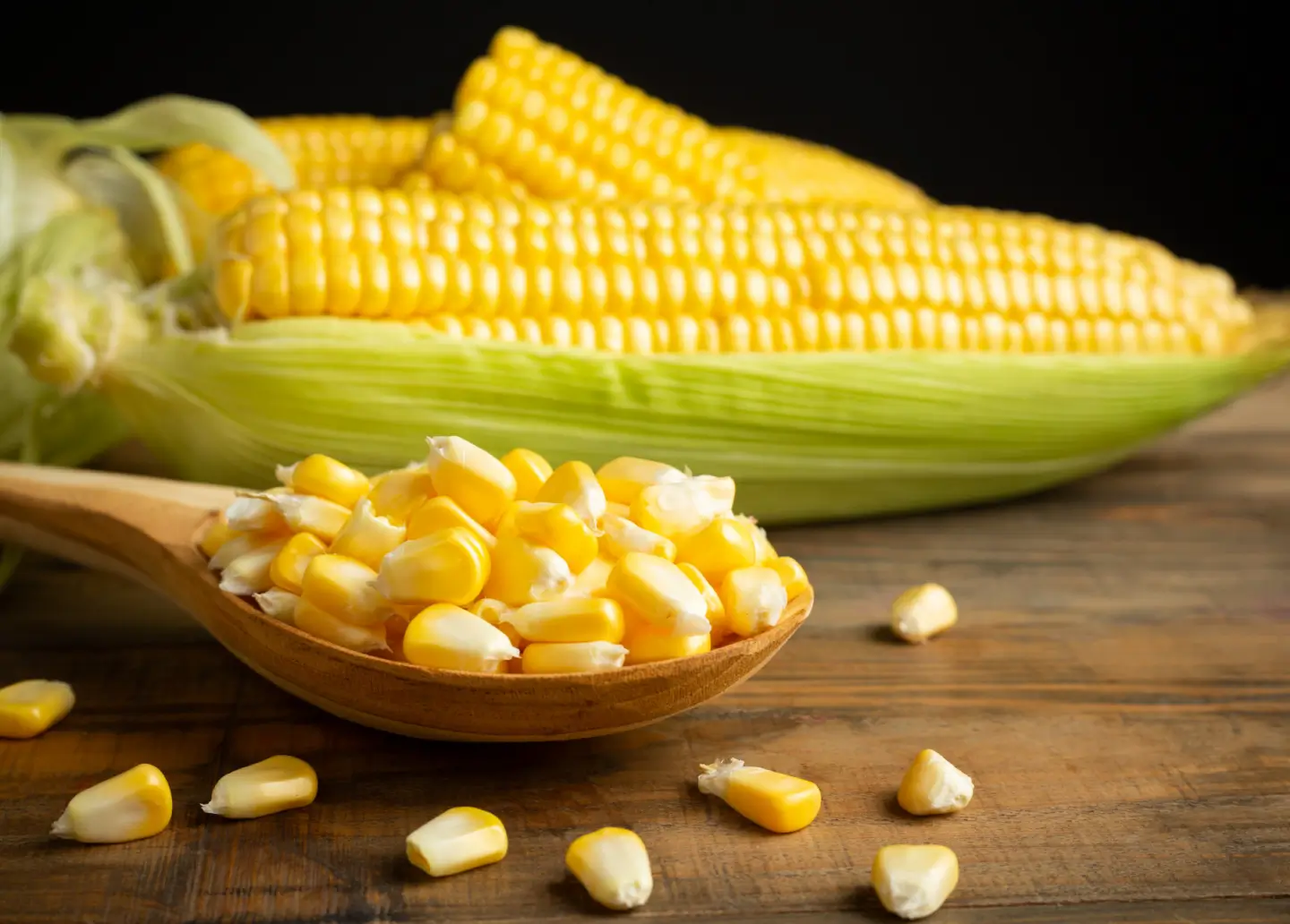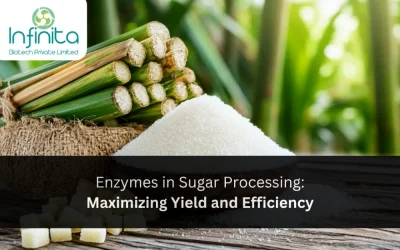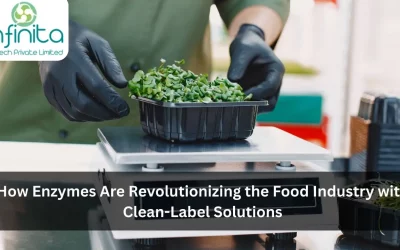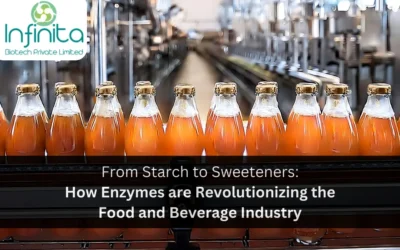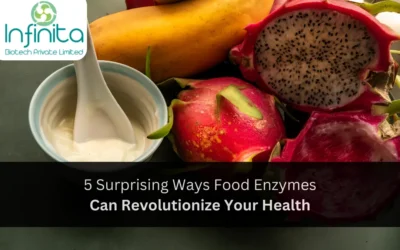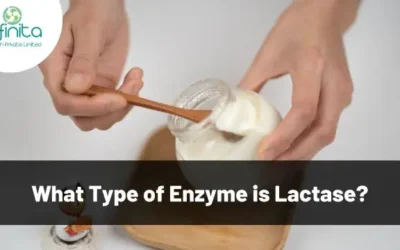Enzymes In Food Industry
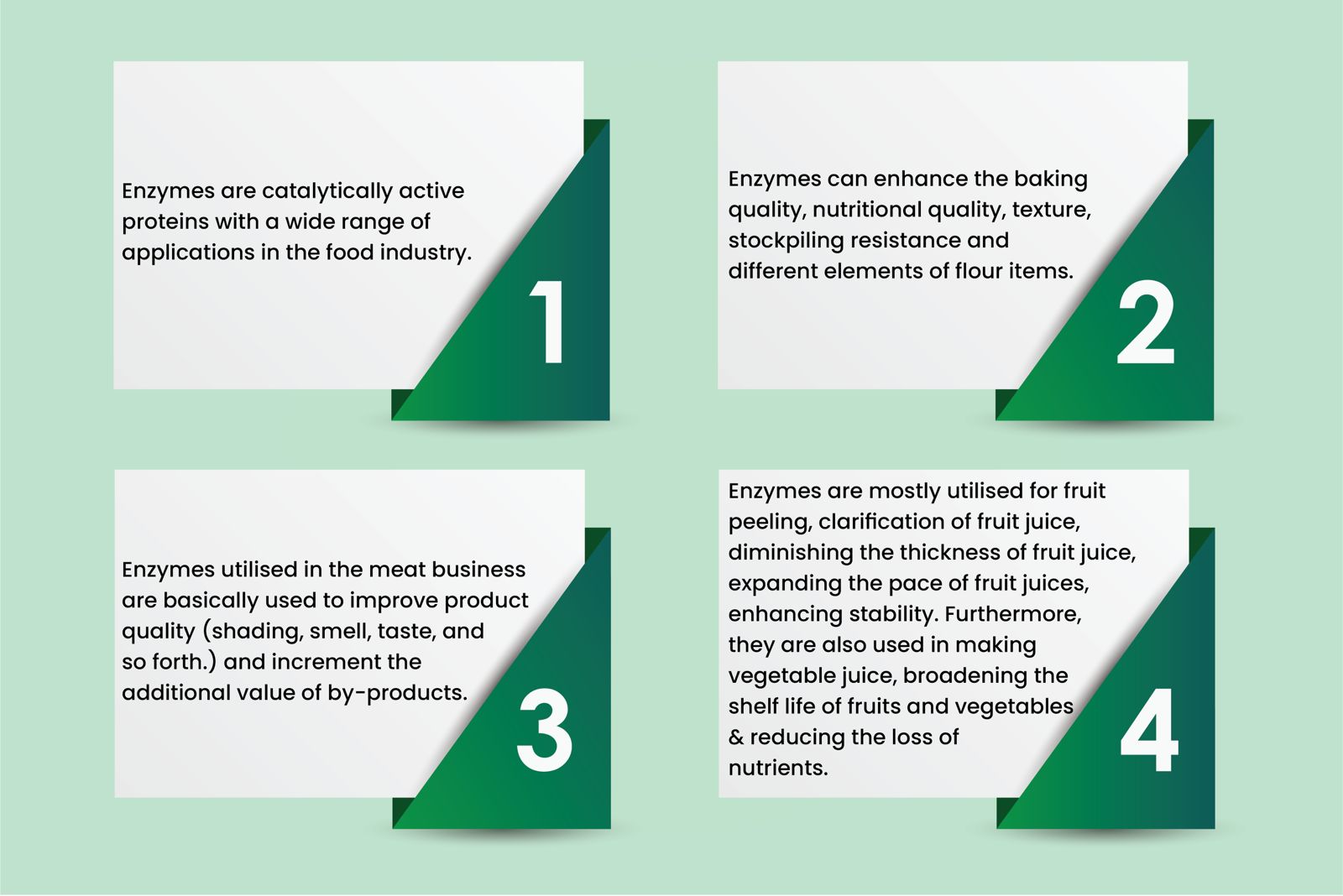
Enzymes are a type of catalytically active protein. Its catalytic effectiveness is higher than inorganic catalysts. With the exception of the general attributes of the chemical catalyst, the enzyme has the accompanying points of interest: high catalytic productivity, high specificity, and mild work condition. Enzyme engineering is another innovation that consolidates enzymology theory with chemical technology. It can wipe out the innate weaknesses of numerous chemical procedures in an assortment of enterprises, and furthermore a driving force for the improvement of the conventional chemical industry.
Previously, application of enzymes in food industry were for the most part sourced from animal carrion and plant extricates. A large portion of the enzymes used now, are from microbial fermentation. By and large, the purity of the enzymes used in food processing should not be especially high, mostly partially purified enzyme. By exception, when proteolytic enzymes are utilised in low-calorie lager, the higher the purity, the better the impact. Application of enzymes in food industry are glucoamylase and then followed by protease, lipase, esterase, oxidoreductase and isomerase enzyme.
1. Flour Product:
Enzymes, from organisms and produced with current biotechnology, are unadulterated natural biological items and green food additives. It assumes a noteworthy job in an assortment of exceptional flour production and transformation. For example, it can enhance the baking quality, nutritional quality, texture, stockpiling resistance and different elements of flour items. The significant catalysts applied for flour alteration are as follows:
- Amylase: Makes bread volume expand; loosens texture; accelerates the batter fermentation; enhances the bread tissue structure, increments the softness of the inner organisation; produces a decent and stable bread colour; enhances the furnace into the growing; anti-ageing enhances bread elasticity and taste; broadens the new stockpiling time of bread.
- Protease: Debilitates the gluten to soften the batter to enhance the viscoelasticity, extensibility and smoothness of the batter; shortens the blending time of the batter, improving the mechanical attributes and baking quality; makes the item simple to shape and enhance the taste.
- Lipase: Postpones the ageing of starch; expands the stability of batter fermentation expanding the volume of bread and improving the bread quality and preservation capacity; decreases the spots on the batter, expanding the bite power; makes the noodles not stick to the boiled water, difficult to break, bright; increments the tensile resistance and elongation of flour.
Different enzymes, for example, phytase, hemicellulase and glutamine aminotransferase are utilised in the flour business to improve the nature of wheat flour. In the functional application, it ought to be founded on the attributes of various unique flour and enzymes to guarantee the rational utilization of enzymes and the correct measure of enzymes. In addition, the normal utilization of an assortment of enzymes (complex enzyme), can diminish the aggregate sum of the enzyme as well as accomplish a synergistic impact.
2. Dairy Processing
The fundamental enzymes utilised in dairy processing are catalase and lactase. Catalase has high enzyme activity in ox-like colostrum, mostly utilized for the expulsion of abundance hydrogen peroxide in dairy items subsequently to destroy pathogens by using H2O2. Lactase can diminish the quantity of lactose to deliver low lactose milk; low lactose hydrolysed milk can improve the milk flavour, pleasantness and health benefit. In fermented milk, the utilisation of lactase can quicken the reaction and enhance the fermentation effectiveness to give fermented milk a one-of-a-kind frankincense flavour and generally broaden the time span of usability of the item.
Lactase utilised in condensed milk not just permits lactose to avoid lactose crystallisation during concentration, but also makes the item scrumptious, diminishes the quantity of sucrose, and as a result, inhibits bacteria. The utilisation of lactase in frozen yoghurt does not only improve the pleasantness to diminish the measure of sucrose, but additionally, solve the sediment because of the crystallization of deep-frozen lactose, decrease the point of freezing and enhance the counter defrosting property. The utilisation of lactase in milk powder can improve the kind of milk powder, its rich caramel and caramel shading after hydrolysis can create chocolate milk.
3. Meat Products Processing
Application of enzymes in food industry such as meat business are basically used to improve product quality (shading, smell, taste, and so forth.) and increment the additional value of by-products. Meat products, injected with papain Ca ++ intensifier, have ruddy earthy colour, fresh taste and great flavour, which totally conquers traditional shortcomings including the extreme taste, tenderness, greyish colour and low yield. The utilisation of a specific measure of bromelain joined with phosphates, calcium chloride, and so on to tender mutton can enhance the taste incredibly. Lamb sausage made with crude materials, which are treated with this strategy, has delicate meat, great elasticity, one-of-a-kind flavour. It likewise compensates for the nonappearance of lamb sausage in ham sausage.
Transglutaminase can catalyse the production of lysine covalent bonds between atoms of proteins or inside particles to create powerful protein gels that bestow explicit hardness and elasticity to meat items. In the deep processing of meat items, the utilisation of protein complex enzymes can create protein hydrolyzate. For example, under the procedure conditions of pH estimation of 6.5-6.8, 55℃ and six-hour reaction time, using papain and bacillus subtilis neutral protease to hydrolyse snake meat, after appropriate sanitisation, it can create substances with rich supplements and bioactive attributes, and simple-to-digest nourishment solution. The majority of the proteins in the hydrolyzate are changed over to amino acids, which makes it tasty, lighter shade and simple to be assimilated. These catalysts can be applied to the creation of seafood seasonings, health drinks, and so on.
4. Fruit And Vegetable Processing And Beverage Industry
Application of enzymes in food industry such as fruit and vegetable are chiefly gelatin, cellulase and amylase, and for the most part, are used alone or in a blend. These enzymes are mostly utilised for fruit peeling, clarification of fruit juice, diminishing the thickness of fruit juice, expanding the pace of fruit juices, enhancing stability, furthermore, they are likewise applied in making vegetable juice, broadening the shelf life of fruits and vegetables, decreasing loss of nutrients, etc. For instance, under the state of pH estimation of 4.0, 60℃ and four-hour r, reaction time including cellulase (600U/100g), pectinase (1000U/100g), alpha-amylase (250U/100g) and papain (10000U/100g) to the clarification lychee juice procedure, and great clarity, low nutritional loss of excellent lychee juice can be accomplished. Furthermore, enzymes are likewise generally utilized in deep processing of tea.
Tannase can enhance the cold dissolving of tea, forestall tea getting cloudy, and can improve the quality of tea. Presently, it is utilised in black tea, green tea and oolong tea. Cellulase and pectinase can separate the cell mass of tea, making the dynamic elements of tea all the more effectively to break down, increasing the pace of instant tea items, product clarity and the smell of tea. Protease can enhance the extraction rate of tea and clarity, upgrade the taste.
All of these are the application of enzymes in Food Industry. As you can see enzymes are very valuable and have many varied uses from improving taste of food products to increasing their shelf life.
